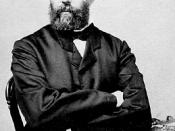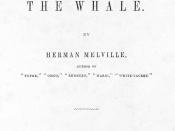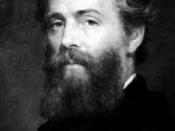"The Allegorical Nature of Moby Dick" Herman Melville began writing Moby Dick for the sole purpose of writing an adventure. However, the book changed when another writer, Nathaniel Hawthorne, influenced his entire style of writing. From Hawthorne, Melville learned to bring out his true feelings. Before, he was scared to include his feelings in his writings due to the thought that they were wicked. As Melville became bolder in his writing, his work became more allegorical. Had it not been for Hawthorne, he would never have discovered his talent of deciphering the subtle secrets of the American consciousness. Most of Herman Melville's complex allegories are an American masterpiece dealing with the inner most thoughts of his mind. Melville's Moby Dick is an allegorical work because of his literary style, his portrayal of characters, and his representation of Nature.
The literary style of Moby Dick not only adds interest but also a medium through which the author presents his views.
One way Melville incorporates his beliefs into the novel is through his choice of words. For instance, when talking about Ahab the author constantly uses demonic language. One situation is during the unholy communion, in which the language has a noticeably evil connotation to it. For example, the self-proclaimed "demoniac," Ahab, calls the ship's crew "imps" while drinking from the "murderous chalices" (159). However, In Chapter 132 Melville contradicts himself to show the reader a better Ahab and build sympathy for him. Through this scene, the author shows he believes Ahab was not born evil but turned evil through a lifetime of grief. This concept of being born innocent shows Melville's transcendental beliefs that people are not born innately evil.
Allusions also were a way for the author to share his beliefs. In the beginning of the novel, Melville uses...


